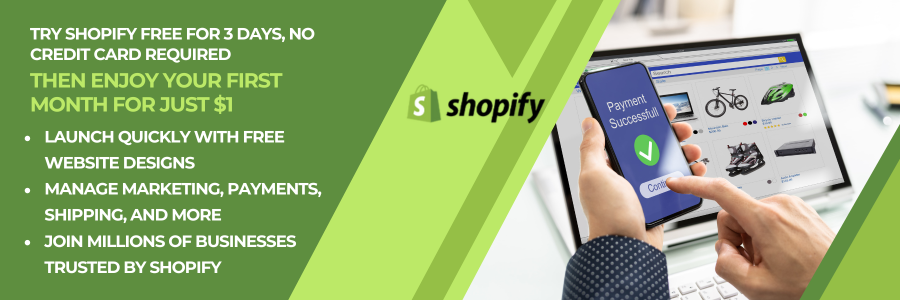As an e-commerce entrepreneur, I know how crucial it is to leverage the right tools for success. Shopify’s app ecosystem offers a wealth of options to enhance your online store’s performance. By carefully selecting and implementing key Shopify apps, you can significantly boost sales, streamline operations, and create a more engaging customer experience.

I’ve explored numerous apps and identified several that stand out for their ability to drive results. These include tools for personalizing the user experience, improving customer support, and optimizing pricing strategies. Some apps focus on gathering and showcasing customer reviews, which can build trust and encourage purchases.
My goal is to help you navigate the vast selection of Shopify apps and choose the ones that will have the most impact on your business. I’ll share insights on apps that can help with everything from currency conversion to competitor price tracking, ensuring your store stays competitive and user-friendly.
Top Sales-Boosting Shopify Apps
I’ve identified several key Shopify apps that can significantly enhance your store’s sales performance. These tools leverage psychological triggers, customer loyalty, and social proof to drive conversions and revenue growth.
Urgency and Scarcity Triggers
Urgency and scarcity are powerful motivators for shoppers. Twik is an app that uses AI to personalize the shopping experience, including creating a sense of urgency. It can display countdown timers for sales or limited-time offers.
Another popular option is FOMO (Fear of Missing Out). This app shows real-time notifications of recent purchases, creating social proof and urgency. It can display how many people are viewing a product or how many units are left in stock.
I recommend testing different urgency tactics to see what resonates with your audience. Be careful not to overuse these triggers, as it can reduce their effectiveness.
Loyalty and Rewards Programs
Loyalty programs are excellent for encouraging repeat purchases and increasing customer lifetime value. Smile.io is a top-rated loyalty app that allows you to create points programs, referral campaigns, and VIP tiers.
Another option is Yotpo Loyalty & Rewards, which integrates seamlessly with Yotpo’s review platform. This app lets you reward customers for purchases, social shares, and leaving reviews.
I suggest starting with a simple points program and gradually adding more complex features as you grow. Make sure your rewards are attractive enough to motivate customers but still profitable for your business.
Product Reviews and Testimonials
Reviews and testimonials provide social proof, boosting customer confidence and sales. Loox is a popular photo review app that encourages customers to submit photos with their reviews, increasing their impact.
Judge.me is another highly-rated option, offering features like review request emails, SEO-friendly review pages, and review carousels. It’s known for its ease of use and customization options.
I recommend actively soliciting reviews from customers and displaying them prominently on product pages. Respond to both positive and negative reviews to show that you value customer feedback.
Essential Apps for Store Operations
Efficient store operations are crucial for Shopify success. The right apps can streamline inventory, shipping, and customer service processes, saving time and boosting sales.
Inventory Management
Inventory management apps help me keep track of stock levels and prevent overselling. I find Stock Sync particularly useful for syncing inventory across multiple sales channels.
For businesses with complex product variations, I recommend using Stocky. It allows me to manage variants easily and set up automated reorder points.
Bundle products can be tricky to manage, but the Bold Bundles app simplifies this process. It automatically adjusts inventory for bundled items when a sale is made.
Shipping and Fulfillment
Efficient shipping is key to customer satisfaction. I use ShipStation to automate order processing and compare rates from multiple carriers.
For international shipping, I rely on Easyship. It helps me navigate customs documentation and provides accurate duty and tax calculations.
Dropshipping businesses benefit greatly from apps like Oberlo or CJDropshipping. These integrate seamlessly with AliExpress and other suppliers, automating order fulfillment.
Customer Service and Engagement
Gorgias is my go-to app for managing customer support. It centralizes all customer interactions and allows me to respond quickly across multiple channels.
To boost engagement, I use Smile.io to create a loyalty program. It encourages repeat purchases and helps build a community around my brand.
Live chat is essential for real-time support. I’ve found Tidio to be user-friendly and effective. It offers AI-powered chatbots that can handle basic inquiries when I’m not available.
For email marketing automation, I rely on Klaviyo. It allows me to create targeted campaigns based on customer behavior and purchase history.
Marketing and Conversion Enhancement Tools
Effective marketing and conversion optimization are crucial for Shopify store success. I’ll explore key tools to boost your marketing efforts and increase sales.
Email Marketing and Automation
Email marketing remains a powerful tool for e-commerce. I recommend using Shopify email marketing apps like Flowio, Mailchimp, Klaviyo, or Omnisend. These apps offer robust automation features to streamline your campaigns.
With these tools, I can set up automated welcome series, abandoned cart reminders, and post-purchase follow-ups. This helps nurture leads and encourage repeat business.
Personalization is key. I use these apps to segment my audience and deliver tailored content based on customer behavior and preferences. This targeted approach significantly improves open rates and conversions.
Search Engine Optimization (SEO)
Optimizing for search engines is crucial for driving organic traffic to my Shopify store. I use SEO apps to improve my site’s visibility in search results.
These tools help me optimize product descriptions, meta tags, and URLs. They also provide keyword suggestions and competitor analysis to refine my SEO strategy.
I focus on creating unique, high-quality content for each product page. This not only helps with SEO but also improves the customer experience.
Regular site audits are essential. I use SEO apps to identify and fix technical issues that could be hindering my search rankings.
Retargeting and Remarketing
Retargeting is an effective way to re-engage visitors who’ve shown interest but haven’t made a purchase. I use retargeting apps to display targeted ads across various platforms.
These tools allow me to create custom audiences based on specific actions taken on my site. For example, I can target users who added items to their cart but didn’t complete the purchase.
I use dynamic product ads to showcase items that visitors have previously viewed. This personalized approach often leads to higher conversion rates.
Cross-platform retargeting is key. I ensure my ads appear on social media, display networks, and even in emails to maximize visibility and encourage customers to return to my store.








Comments (561)